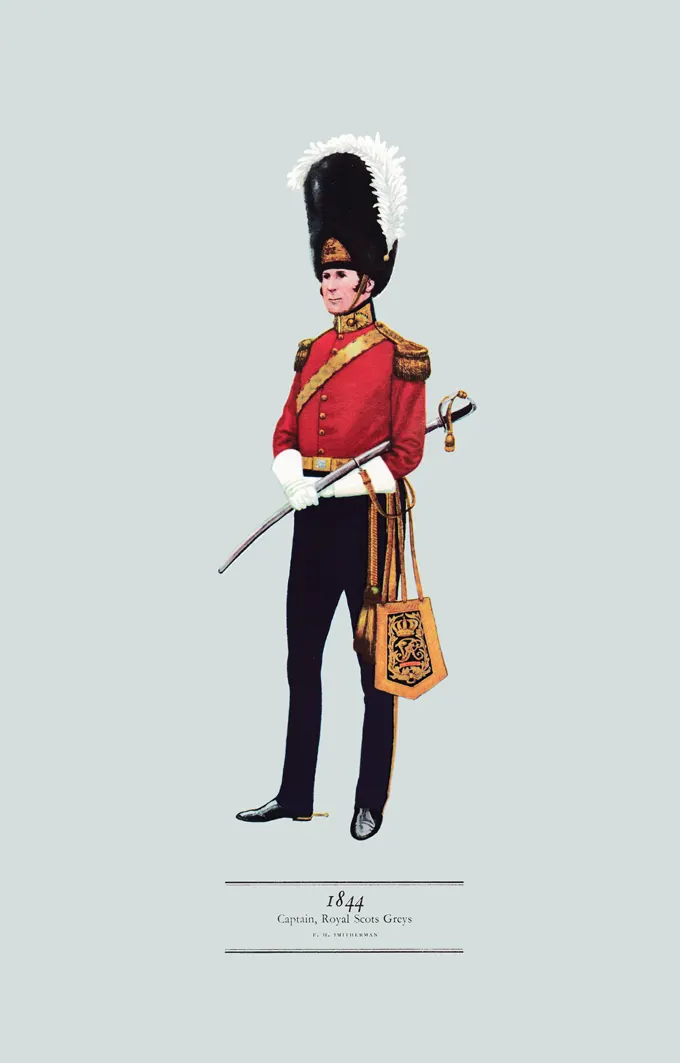Captain, Royal Scots Greys, 1844
£12.00
Raised 1678; from 1921 The Royal Scots Greys (2nd Dragoons); from1971 The Royal Scots Dragoon Guards (Carabiniers and Greys) – SCOTS DG (scroll down for a more detailed Description)
Published 1962 by © Hugh Evelyn Limited; drawn by Colonel Philip Henry Smitherman (1910-1982), Royal Corps of Signals
Size: c. 24 x 37cm [9 ½ ″ x 14 ½ ″] (may vary slightly from printers’ cut 50 years ago)
Printed on on medium cardstock weighing 144 g/sm2 faced in light greyish blue (RGB c. d5dede)
Print is STANDARD size – shipping is the same for 1 to 10 prints (based on largest print size in your order) – see Shipping & Returns
In stock
- Satisfaction Guaranteed
- No Hassle Refunds (see Shipping and returns)
- Secure Payments
Description
The Greys were raised in 1681 as the Royal Regiment of Scots Dragoons and were mounted on grey horses from 1700 onwards. They have had many official titles, all rather similar, and became the Royal Scots Greys (2nd Dragoons) before amalgamating with the 3rd Carabiniers (Prince of Wales’s Dragoon Guards) to form The Royal Scots Dragoon Guards (Carabiniers and Greys). At Waterloo Sergeant Charles Ewart captured the Eagle of the French 45th Regiment, an exploit that earned them the name the ‘Birdcatchers’. At Ramillies it was discovered that one of the troopers was a woman, enlisted to find her husband. When she died in 1739 she received a full military burial. This officer wears the dress worn by the regiment just before the Crimean War. The other regiments of Dragoon Guards and Dragoons wore helmets instead of the Greys’ bearskin caps. On active service the epaulettes and sabretache would have been removed and, apart from the colour, the result would be not unlike modern battle-dress. Throughout its history the headgear of the Royal Scots Greys has been distinctive. The regiment was awarded the right to wear a grenadier cap for its conduct at the battle of Ramillies and did so whilst full dress lasted. The early caps were embroidered with the device of a thistle, officers’ caps being of velvet, and were shaped like infantry grenadiers’ caps. When infantry grenadiers changed to fur caps, the Greys did the same. The cap gradually became larger until it was as shown here.
Additional information
| Dimensions | 24 × 37.5 cm |
|---|




